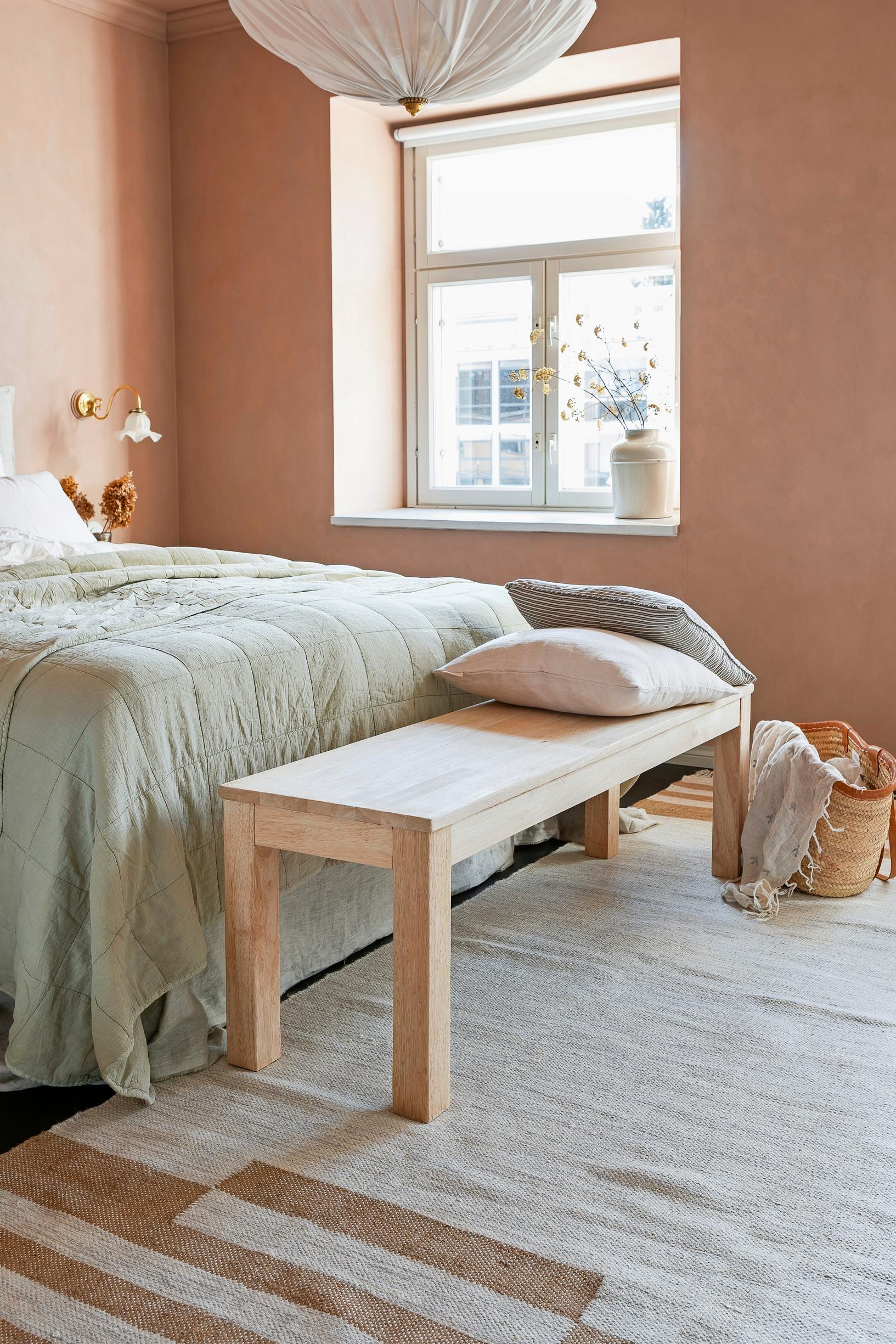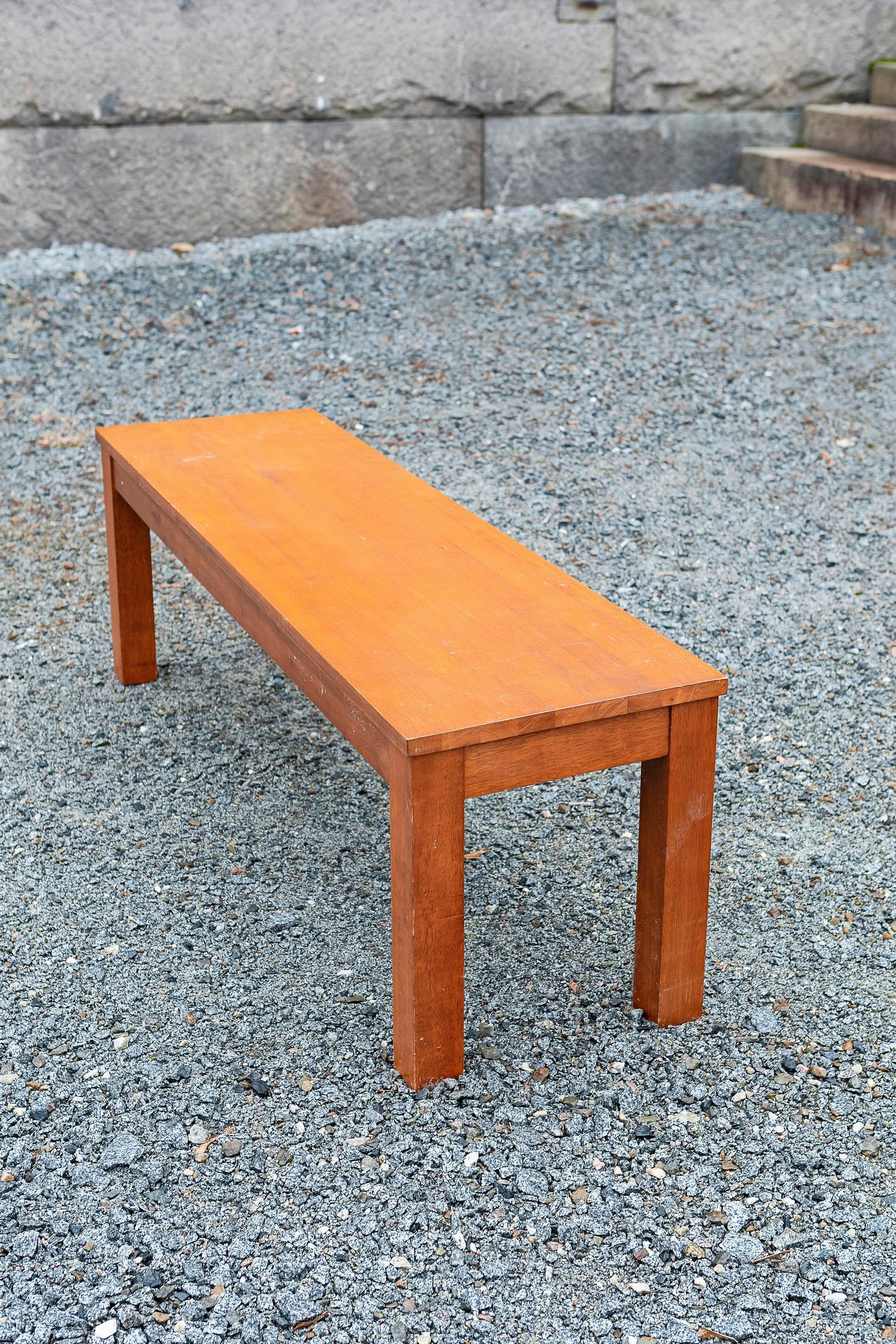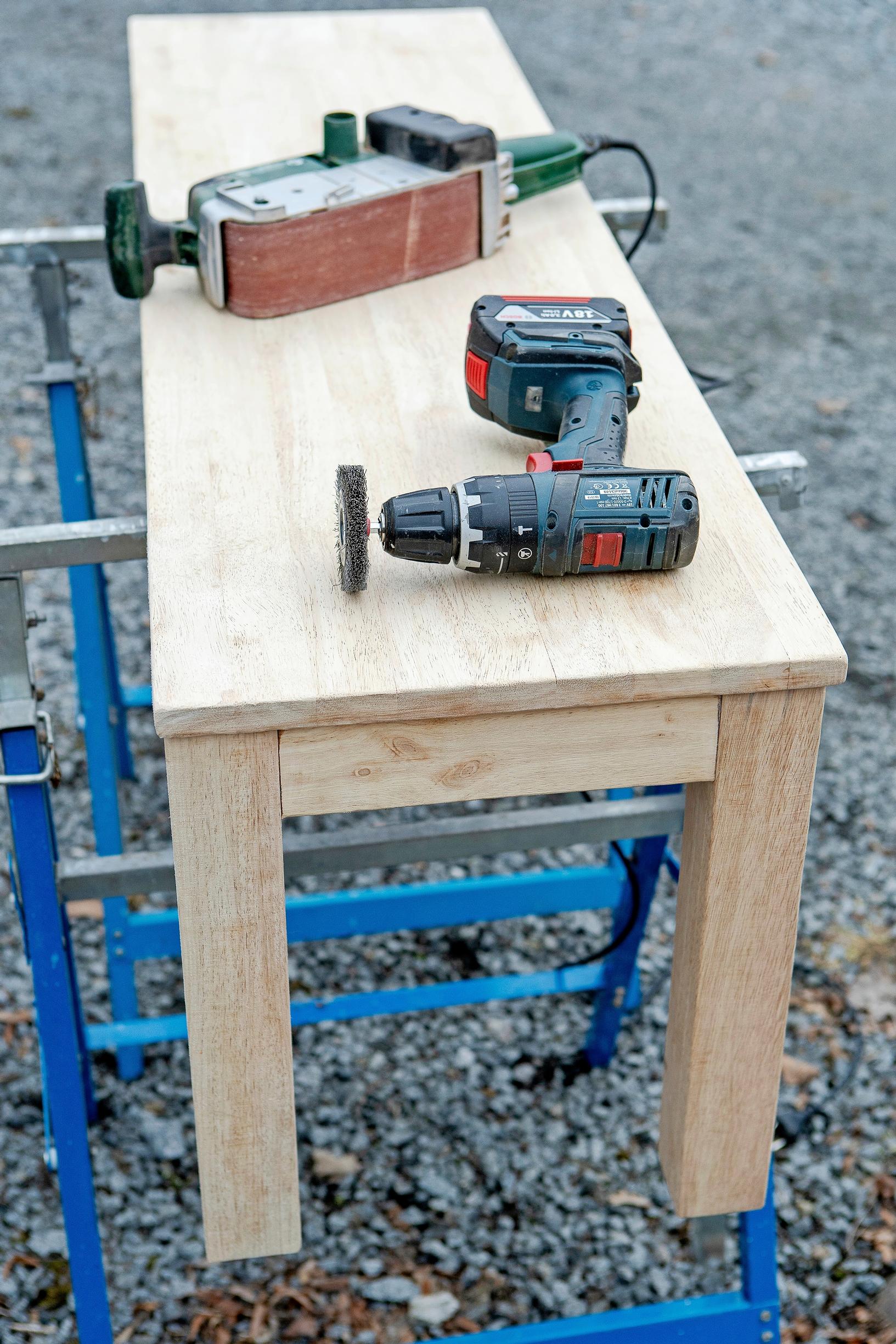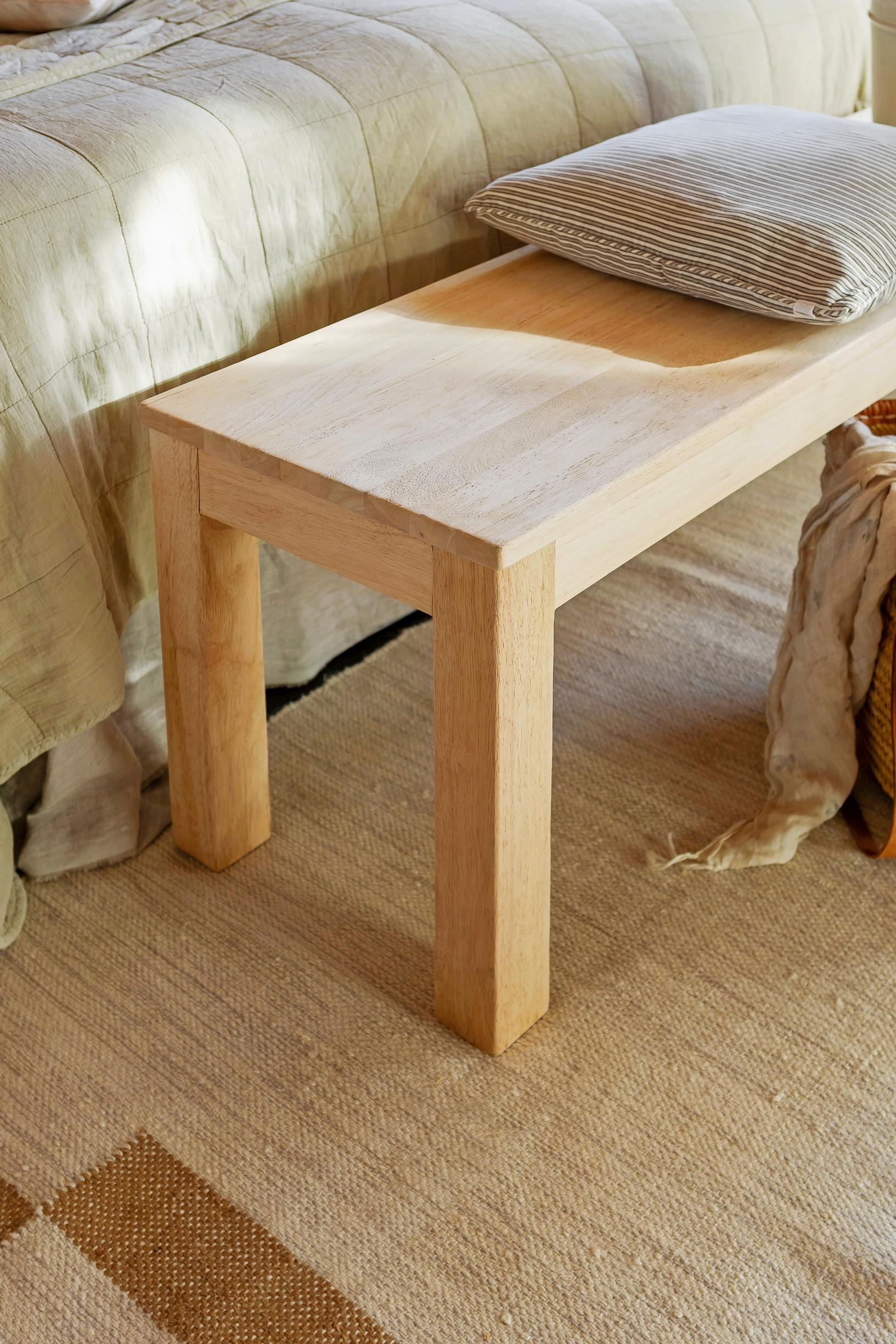Aged to perfection
Transforming a 90s cherry bench: see the before and after with soap and distress!
Would you believe it’s the same piece? This 90s bench gets a velvety finish with linseed soap and a worn, rustic look using a steel brush and small stones. The distressing technique suits any wooden furniture. Check out our instructions!

Patinating a wooden bench—supplies
- wooden bench or stool
- sander
- sandpaper, grit 60 and 120 or 180
- drill and steel brush attachment
- protective gloves and a respirator
- coarse scrubbing brush
- linseed soap
- (small stones and a sock)

Patinating a wooden bench—instructions

- First, sand off the old surface treatment using a sander and 60-grit sandpaper. Sand in multiple directions to give the wood an aged effect. Distress and round the bench’s edges as you like. Wear a respirator to protect yourself from wood dust, even if you’re working outdoors.
- Next, give the wood more wear with a steel brush attachment on a drill. Focusing on the edges and ends of the bench creates a naturally worn look. An angle grinder with a steel brush is even more powerful for heavy distressing. You can also beat the bench with stones placed in a sock to create dings and scratches, or use a saw to add extra patina.
- Finally, sand the bench with fine sandpaper so the surface isn’t splintery. If you want a stronger effect, add more patina as needed, then do another fine sanding.
- Finish with a soap scrub. Mix 0.5 dl (about 0.2 cups) of linseed soap into 1 liter (about 1.06 quarts) of cold water. Scrub the entire wooden surface with a brush. Wipe it clean with a cloth and cold water. Repeat the wash 3–4 times, letting the bench dry between washes.

Tip!
If needed, wash the bench with a mild solution of linseed soap and water. Avoid pine soap, as it makes the surface dry and splintery.
Where to buy supplies: steel brush attachment from Puuilo.
Most recent
Latest


